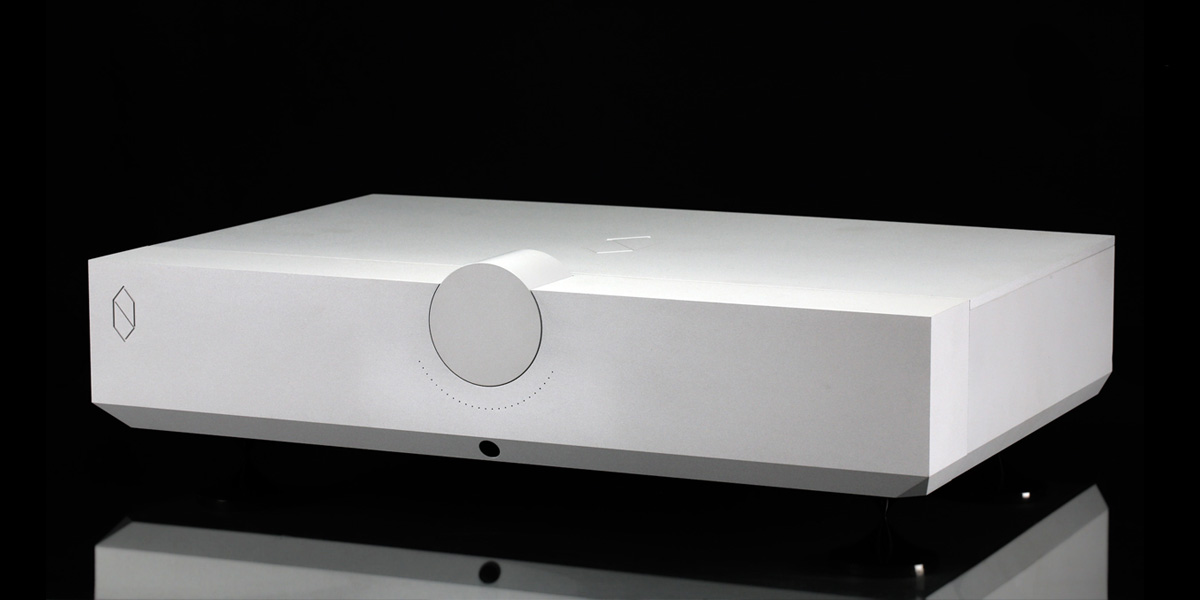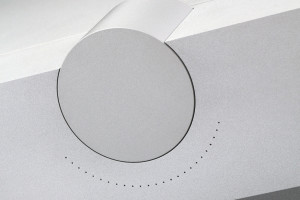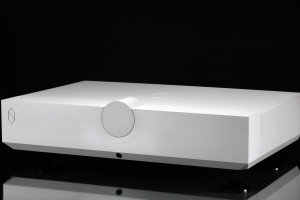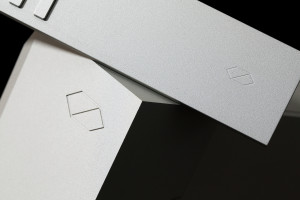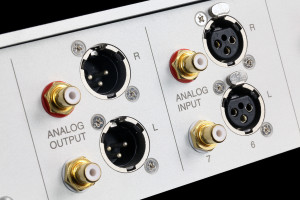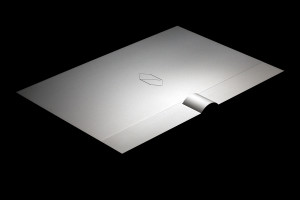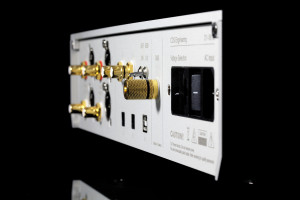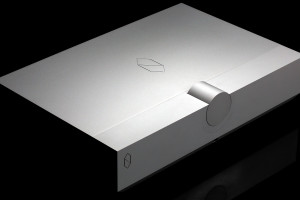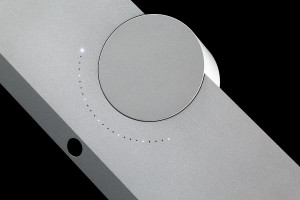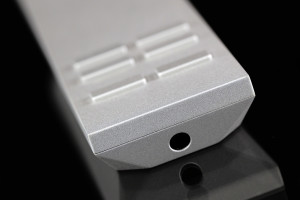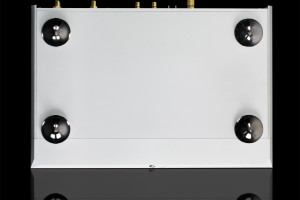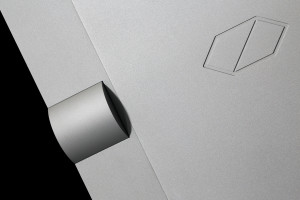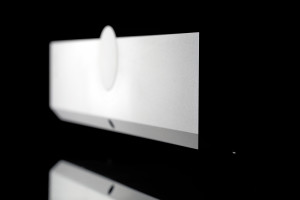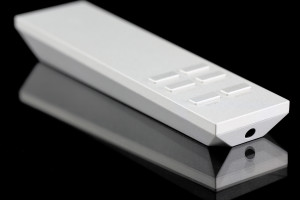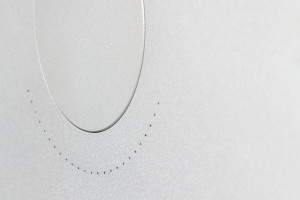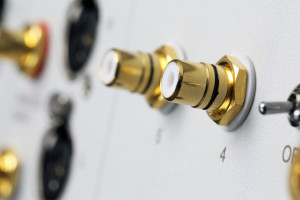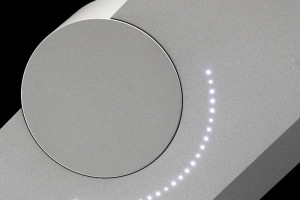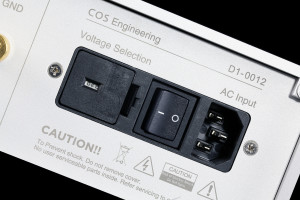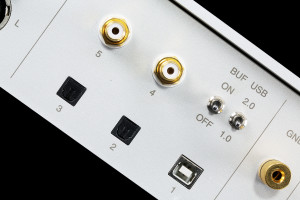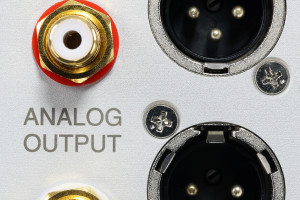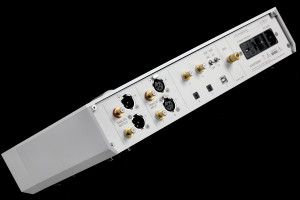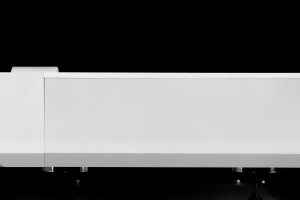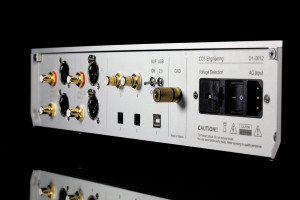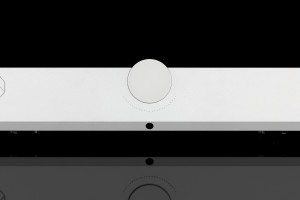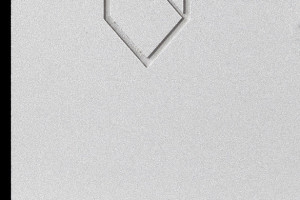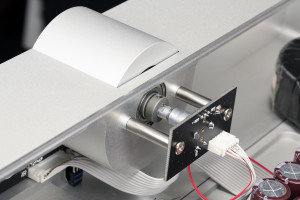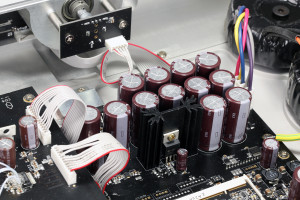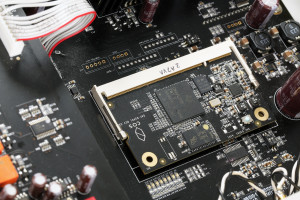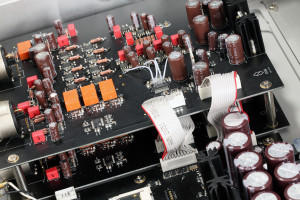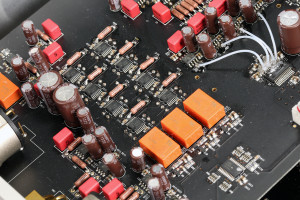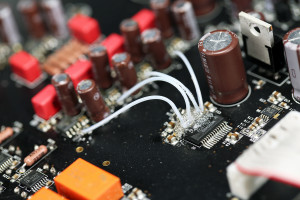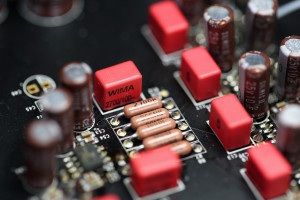In January 2015 Srajan Ebaen shared his most prominent 2014 findings. The list was short, merely four devices were on it. Aqua HiFi La Scala MKII, Pass Labs XA-30.8 and ENIGMAcoustics Mythology M1 gained some fame whereas COS Engineering D1 remained a mystery. Since its price was similar to DHT based LampizatOr Level7 I had at that time, it made sense to check whether manufacturer would be interested in additional coverage. Long story short, it happened.
COS Engineering
COS Engineering is a 2 years old company with only one product in its portfolio – D1. The naming of said device might seem a bit enigmatic at first but it simply stands for the first DAC. In soon to be released H1’s case the analogy is similar but more emphasis is put to headphones. My guess is that it’s going to be much cheaper than $9’000 priced D1. COS is short for Connoisseur of Sound. Such naming fits company’s obviously audiophile profile. Eastern manufactures can often be somewhat coarse in that regard. Behind e-vaping brand known as Tobeco stands Together Best Cooperation naming. In the majesty of such awkward ideas, COS Engineering sounds professional. Said Taiwanese company is a small audio manufacture, employing just several people. Maggie handles PR and marketing, C.C. is both CEO and main investor whereas Stephaen and Oliver provide an engineering element to the mix. Those two have diverse tasks on their shoulders; former is responsible for planning and visuals and latter does R&D. Said engineers have nearly 20 years of experience yet all COS Engineering people are declared music enthusiasts. In normal circumstances yours truly wouldn’t even mention about this. But products from Chord, McIntosch, Sonus faber, Tannoy and Dynaudio were on the pictures Maggie provided. Fair enough. It’s also worth mentioning that said lady had a very good language skills. This isn’t something obvious, barrier of such sort can be a major showstopper and I’ve encountered several situations that led to nothing past common courtesies. Solid English and fast response time made things smooth and easy with COS Engineering.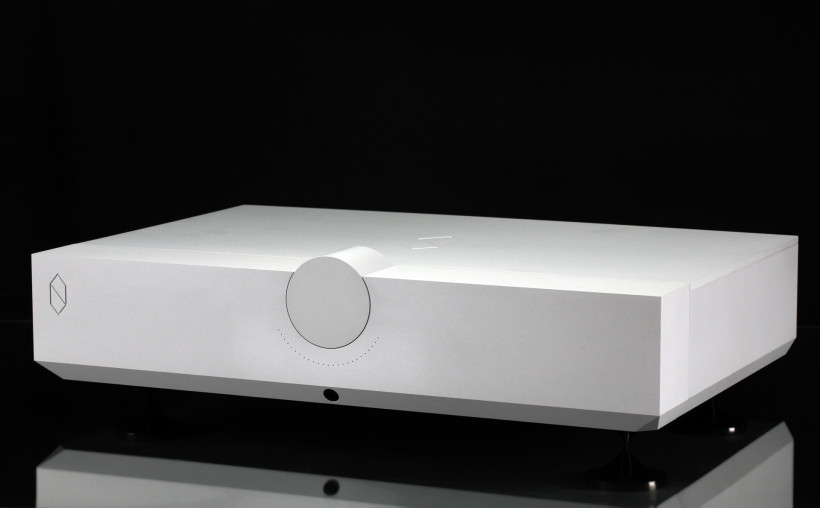 Several additional things have to be said in this chapter’s summary. Srajan wrote about these already in his COS Engineering D1 review. This company has an extremely difficult task to handle and a lot to prove in this sea full of sharks. For now it’s a small fish after all and D1’s very steep pricing makes it even more difficult to swim safely. Having $9’000 on hand to spend on a source, one can be really picky. Competition is extremely fierce and when we look at superb AURALiC Vega priced at one third of D1’s asking, things are getting even tougher, aren’t they? Moving upwards, PS Audio DirectStreamDAC or AMD DP-777 are quite popular options and in D1’s price range Meitner MA-1 or one of LampizatOr’s flock are merely two out of many additional alternatives. Potential buyer can pick and choose to his heart’s content driven by various aspects; topology, functionality, looks, sound profile, size and so on. Lots of things can be achieved in audio with $9’000 to spend. But again I have to repeat after Srajan that even AURALiC started somewhere. Who knows? Maybe COS Engineering will turn out to have similarly big impact on the market? Let’s find out.
Several additional things have to be said in this chapter’s summary. Srajan wrote about these already in his COS Engineering D1 review. This company has an extremely difficult task to handle and a lot to prove in this sea full of sharks. For now it’s a small fish after all and D1’s very steep pricing makes it even more difficult to swim safely. Having $9’000 on hand to spend on a source, one can be really picky. Competition is extremely fierce and when we look at superb AURALiC Vega priced at one third of D1’s asking, things are getting even tougher, aren’t they? Moving upwards, PS Audio DirectStreamDAC or AMD DP-777 are quite popular options and in D1’s price range Meitner MA-1 or one of LampizatOr’s flock are merely two out of many additional alternatives. Potential buyer can pick and choose to his heart’s content driven by various aspects; topology, functionality, looks, sound profile, size and so on. Lots of things can be achieved in audio with $9’000 to spend. But again I have to repeat after Srajan that even AURALiC started somewhere. Who knows? Maybe COS Engineering will turn out to have similarly big impact on the market? Let’s find out.
Design
COS Engineering D1 might seem as a d/a converter in the first place, but it is also equipped with a very serious volume control section inside. Latter is added in most sources to make things a bit more universal yet practice shows rather often that separate preamplifier is a good choice to make. Of course there are some exceptions. For instance, thus far I wasn’t given a reason to part with my TAIV VC-03 module built in LampizatOr’s products. Its case showed me more than once that separate volume handling addition nets no benefits. It’s also safe to say that perhaps I haven’t yet stumbled upon a preamplifier good enough to justify the buy. Anyway, COS Engineering representative informed me that company’s crew put a lot of effort to make it perfectly viable, hence worth checking out. We’ll get to that later on. Hi-res files aficionados should acknowledge that D1 doesn’t do DSD. Unless it’s converted to PCM via Foobar2000 or any other software capable of doing so. D1 not being capable of handling these natively might be a deal breaker to some people as said files are getting more and more popular. Yet truth be told, in comparison to PCM this heavy format still is virtually non-existent. To put numbers to the context, my DSD collection is 3% exactly of all music files I have so that’s that. I was told that if the demand will be high enough, said format will be supported in the future. Completely separate thing is a DSD vs PCM matter soundwise. But that’s neither time nor place to divulge about it. Product delivered to yours truly was packed in an usual cardboard. No flight cases, wooden boxes and such. Covered in a pleasantly soft velour alike material and then bubble wrapped, D1 arrived safely. Sturdy remote control, AC power cord and decently written (no grammar kinks so often seen in Taiwanese products instructions) user manual were inside the package as well. After unpacking and finally seeing D1, I noted that subjectively this is one gorgeously looking device. Pictures do some justice here but that’s nothing in comparison to a live view. First impression is an extremely positive one. In comparison to LampizatOr’s Level7 there is no contest actually in terms of build quality. Polish product still bears a lot of DIY marks whereas COS Engineering D1 looks like a huge pile of money and a small masterpiece on top of it. Latter’s build quality is very good, all CNC machined elements are perfectly matched. Chassis is made out of several parts screwed together from inside. Bottom, top, sides and rear are separate elements whereas massive front slides onto and unites these in a cap alike fashion. Aluminium texturing is sandblasted, therefore a bit grainy and similar to i.e. Questyle CMA800R amplifier’s enclosure. It is also rather easily seen that D1 is a product of much greater build quality. Though both devices gather dust fairly quickly, even slightest stains are painfully visible and hard to remove completely.
Product delivered to yours truly was packed in an usual cardboard. No flight cases, wooden boxes and such. Covered in a pleasantly soft velour alike material and then bubble wrapped, D1 arrived safely. Sturdy remote control, AC power cord and decently written (no grammar kinks so often seen in Taiwanese products instructions) user manual were inside the package as well. After unpacking and finally seeing D1, I noted that subjectively this is one gorgeously looking device. Pictures do some justice here but that’s nothing in comparison to a live view. First impression is an extremely positive one. In comparison to LampizatOr’s Level7 there is no contest actually in terms of build quality. Polish product still bears a lot of DIY marks whereas COS Engineering D1 looks like a huge pile of money and a small masterpiece on top of it. Latter’s build quality is very good, all CNC machined elements are perfectly matched. Chassis is made out of several parts screwed together from inside. Bottom, top, sides and rear are separate elements whereas massive front slides onto and unites these in a cap alike fashion. Aluminium texturing is sandblasted, therefore a bit grainy and similar to i.e. Questyle CMA800R amplifier’s enclosure. It is also rather easily seen that D1 is a product of much greater build quality. Though both devices gather dust fairly quickly, even slightest stains are painfully visible and hard to remove completely.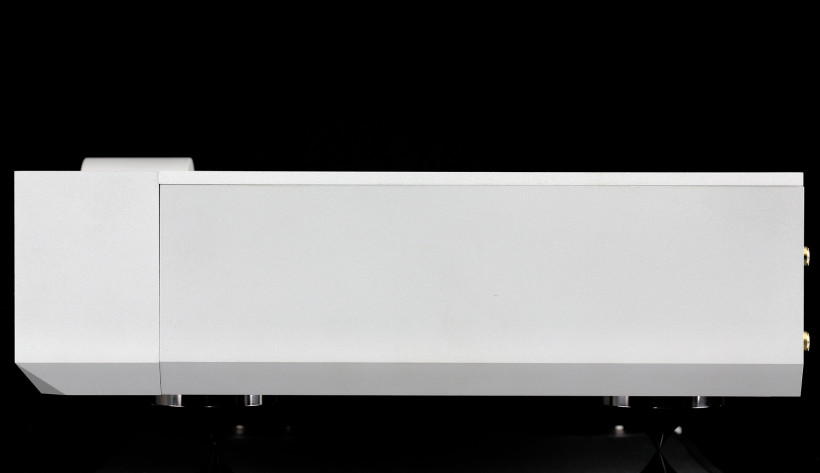 The device itself might look somewhat coarse at first. But closer examination reveals coherence and attention to details, namely neatly trimmed edges or evenly spaced gap between volume knob and its surroundings. This is a clean, minimalistic design, dare I say visually safe and presumably appealing to most people. COS Engineering D1 is both heavy and big. It weighs hefty 9 kilograms and its measurements are 40 x 30 x 10 cm (W x D x H). Not a small d/a converter to have and even placed among humongous Level7 it makes one to pay full attention.
The device itself might look somewhat coarse at first. But closer examination reveals coherence and attention to details, namely neatly trimmed edges or evenly spaced gap between volume knob and its surroundings. This is a clean, minimalistic design, dare I say visually safe and presumably appealing to most people. COS Engineering D1 is both heavy and big. It weighs hefty 9 kilograms and its measurements are 40 x 30 x 10 cm (W x D x H). Not a small d/a converter to have and even placed among humongous Level7 it makes one to pay full attention. Crystal shaped logo representing COS Engineering brand is the only ornament on D1’s front. That aside it’s squeaky clean. Large and centrally located volume knob works as smoothly as they come. All of its 256 (with 0.25 dB intervals) steps can be felt and heard while rotating. Said round element has been perfectly placed deep in the front panel and protruding a bit over D1’s upper ledge looks very nice. 25 holes with blue LED illuminations are placed below and once all lit-up, device smiles in a way. Volume knob allows user to jump between digital inputs as it can be pushed. In that mode only one out of five peculiar LED’s in even spaces is on. This solution is simple yet well implemented and elegant. A bit below, on heavily cropped lower edge there’s a round and black window mounted with IR receiver behind it. From D1’s usability side there’s nothing to complain about. Well, it’d be nice if rather intense lighting could be dimmed or turned off via remote control as some of us like to have music served in the dark. Digital volume regulation is precise, yet slow, one has to really spin the knob but that’s not a deal breaking problem, far from it. And once D1 is off, both volume settings and previously selected input are lost. Of course this doesn’t apply when the product is in standby mode.
Crystal shaped logo representing COS Engineering brand is the only ornament on D1’s front. That aside it’s squeaky clean. Large and centrally located volume knob works as smoothly as they come. All of its 256 (with 0.25 dB intervals) steps can be felt and heard while rotating. Said round element has been perfectly placed deep in the front panel and protruding a bit over D1’s upper ledge looks very nice. 25 holes with blue LED illuminations are placed below and once all lit-up, device smiles in a way. Volume knob allows user to jump between digital inputs as it can be pushed. In that mode only one out of five peculiar LED’s in even spaces is on. This solution is simple yet well implemented and elegant. A bit below, on heavily cropped lower edge there’s a round and black window mounted with IR receiver behind it. From D1’s usability side there’s nothing to complain about. Well, it’d be nice if rather intense lighting could be dimmed or turned off via remote control as some of us like to have music served in the dark. Digital volume regulation is precise, yet slow, one has to really spin the knob but that’s not a deal breaking problem, far from it. And once D1 is off, both volume settings and previously selected input are lost. Of course this doesn’t apply when the product is in standby mode. Product’s top and side panels create a hood visible at its rear, somewhat similar in devices made by Lumin and Bakoon but shorter. Both XLR and RCA inputs is there, the same story goes with outputs. A word about the quality of those is in order. RCA’s are usual suspects, nothing to gush about. XLR’s though, those scream quality and price. As far as I know neither Neutrik, nor Furutech, Cardas, Oyaide or SwitchCraft are responsible for those. Digital section consists of five inputs in total; two coaxials, two opticals and one USB type B. One out of two switches nearby allows to set USB to work in 1.0 (driverless operation yet with playback truncated to 44.1 kHz) or 2.0 mode whereas the other enables 1000 ms buffering layer. Latter works like a charm with music, it indeed improves overall sound quality but is useless with other media. It’s quite logical as voicing will be desynchronized with visuals by said one second i.e. during movies. A bit further to the right a grounding pin and IEC socket with self replaceable fuse are mounted. D1 takes 50W during operation and ten times less in standby mode. Four rather wide spikes on product’s bottom complete the picture. Flawlessly working remote control has six responsive buttons and allows operation without the need of moving from comfy couch. Its shape quite matches D1’s design which is nice. In many expensive d/a converters such additions are often an OEM ones. Therefore kudos to COS Engineering for taking an extra mile in that regard. Nearly five figures source surely deserves nice touches of this sort.
Product’s top and side panels create a hood visible at its rear, somewhat similar in devices made by Lumin and Bakoon but shorter. Both XLR and RCA inputs is there, the same story goes with outputs. A word about the quality of those is in order. RCA’s are usual suspects, nothing to gush about. XLR’s though, those scream quality and price. As far as I know neither Neutrik, nor Furutech, Cardas, Oyaide or SwitchCraft are responsible for those. Digital section consists of five inputs in total; two coaxials, two opticals and one USB type B. One out of two switches nearby allows to set USB to work in 1.0 (driverless operation yet with playback truncated to 44.1 kHz) or 2.0 mode whereas the other enables 1000 ms buffering layer. Latter works like a charm with music, it indeed improves overall sound quality but is useless with other media. It’s quite logical as voicing will be desynchronized with visuals by said one second i.e. during movies. A bit further to the right a grounding pin and IEC socket with self replaceable fuse are mounted. D1 takes 50W during operation and ten times less in standby mode. Four rather wide spikes on product’s bottom complete the picture. Flawlessly working remote control has six responsive buttons and allows operation without the need of moving from comfy couch. Its shape quite matches D1’s design which is nice. In many expensive d/a converters such additions are often an OEM ones. Therefore kudos to COS Engineering for taking an extra mile in that regard. Nearly five figures source surely deserves nice touches of this sort.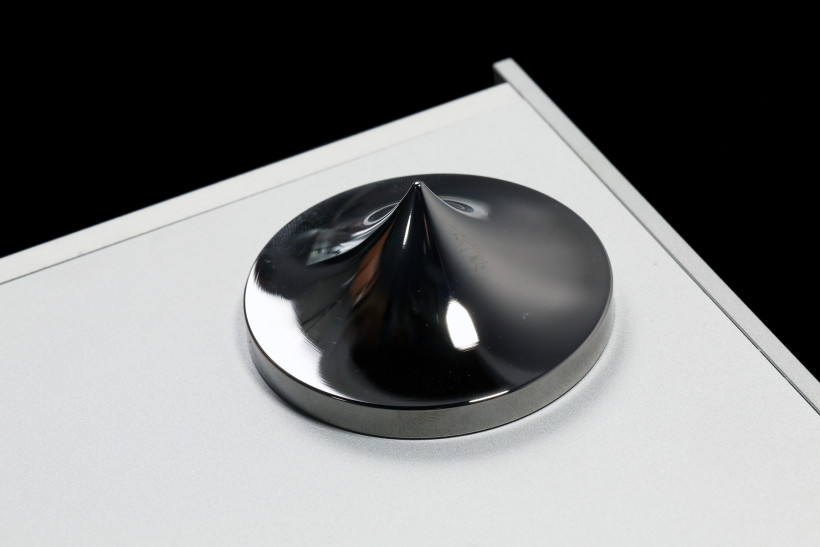 Let’s take a peek under the hood. It’s quite tight there, yet not to Aqua HiFi’s La Scala MKII level. D1’s inside in clean and tidy. D1 is a dual mono beast. Each of two Plitron’s toroidal transformers handle analog and digital stages separately. Device’s innards are placed on four boards in total. The smallest one is fixed to ball-bearing based volume knob mechanism. PCB with voltage stabilization located in the middle is the largest one. On the very same laminate but a bit below, proprietary DSP based heart of D1 is mounted. Assembly and coding took Oliver one and a half year. Digital receiver’s signal is firstly handled by Texas Instruments SOC chip. Regardless of resolution it’s upsampled to 176.4 kHz or 192 kHz by a 32-bit proprietary algorithm. Of course SRC modules in D1’s d/a chips are bypassed. Then the signal is buffered by one second and reclocked via <1ps oscillator. As aforementioned, said buffering process can be killed via switch placed on D1’s rear. Moving on, there are two PCB’s stacked one onto another, both channels are handled separately. Each is equipped with a single TI’s Burr-Brown PCM1792 d/a chip. It’s hard to miss several precisely cut pieces of teflon insulated wire soldered to said converters voltage outputs. Such treatment decreases their SNR by additional 6 dB according to COS Engineering team. DALE resistors and NEC relays based volume regulation with output socketry past it closes this chapter.
Let’s take a peek under the hood. It’s quite tight there, yet not to Aqua HiFi’s La Scala MKII level. D1’s inside in clean and tidy. D1 is a dual mono beast. Each of two Plitron’s toroidal transformers handle analog and digital stages separately. Device’s innards are placed on four boards in total. The smallest one is fixed to ball-bearing based volume knob mechanism. PCB with voltage stabilization located in the middle is the largest one. On the very same laminate but a bit below, proprietary DSP based heart of D1 is mounted. Assembly and coding took Oliver one and a half year. Digital receiver’s signal is firstly handled by Texas Instruments SOC chip. Regardless of resolution it’s upsampled to 176.4 kHz or 192 kHz by a 32-bit proprietary algorithm. Of course SRC modules in D1’s d/a chips are bypassed. Then the signal is buffered by one second and reclocked via <1ps oscillator. As aforementioned, said buffering process can be killed via switch placed on D1’s rear. Moving on, there are two PCB’s stacked one onto another, both channels are handled separately. Each is equipped with a single TI’s Burr-Brown PCM1792 d/a chip. It’s hard to miss several precisely cut pieces of teflon insulated wire soldered to said converters voltage outputs. Such treatment decreases their SNR by additional 6 dB according to COS Engineering team. DALE resistors and NEC relays based volume regulation with output socketry past it closes this chapter.
Sound
In COS Engineering D1’s case, a small amount of planning was in order. Since this source is an expensive one, heavily priced companions should greatly help in its true potential evaluation. This review could have been based solely on my own environment’s discoveries. Yet opportunity arose to have a trip to my friend Jacek, Soundrebels.com co-owner. He uses about 70 sq. meters acoustically treated listening room, as far as I know has an extremely tolerant wife and a full Reimyo setup. Over the years Jacek has made only one change in his rig. Harmonix Bravo! floorstanding version has found a new home and Trenner&Friedl Isis model appeared instead. Once I got to Jacek, Isis were on loan and Pharaoh sibling arrived.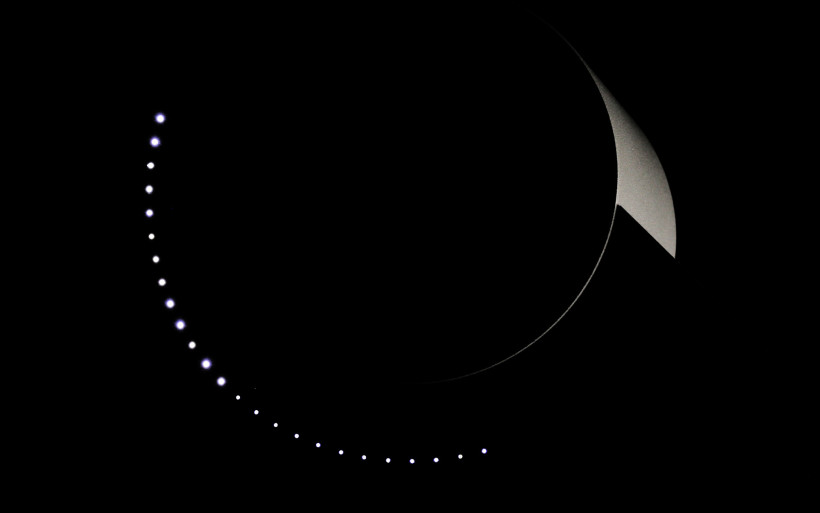 According to my host, there’s quite a story behind being faithful to Kazuo Kiuchi’s work. All of said gent’s creations co-exist in a deeply complementary fashion, while making them he presumably had a full picture sketched already. Digging even deeper, Harmonix accessories are a must to complete this Japanese story. Of course each Kazuo Kiuchi’s device can be bought separately yet every Reimyo aficionado I’m aware of knows that those work best when combined together. In such scenario everything clicks and is considered as the safest bet in order to grasp all Kiuchi San has achieved over many years. Being in touch with lots of great and often expensive devices, Jacek confirmed that none of those were able to replace any piece of his Reimyo/Harmonix setup thus far. He also shared with me rather bluntly that chances of random equipment being better in this unfriendly Japanese environment are minimal. Therefore the assumption of D1 being worse than DAP-999EX was made at the very beginning. But the real question begging to be answered was: by how much? I’ve decided to visit my friend with D1 mainly due to its pricing similar to Reimyo’s d/a converter. It made sense from such standpoint and here’s what has happened.
According to my host, there’s quite a story behind being faithful to Kazuo Kiuchi’s work. All of said gent’s creations co-exist in a deeply complementary fashion, while making them he presumably had a full picture sketched already. Digging even deeper, Harmonix accessories are a must to complete this Japanese story. Of course each Kazuo Kiuchi’s device can be bought separately yet every Reimyo aficionado I’m aware of knows that those work best when combined together. In such scenario everything clicks and is considered as the safest bet in order to grasp all Kiuchi San has achieved over many years. Being in touch with lots of great and often expensive devices, Jacek confirmed that none of those were able to replace any piece of his Reimyo/Harmonix setup thus far. He also shared with me rather bluntly that chances of random equipment being better in this unfriendly Japanese environment are minimal. Therefore the assumption of D1 being worse than DAP-999EX was made at the very beginning. But the real question begging to be answered was: by how much? I’ve decided to visit my friend with D1 mainly due to its pricing similar to Reimyo’s d/a converter. It made sense from such standpoint and here’s what has happened.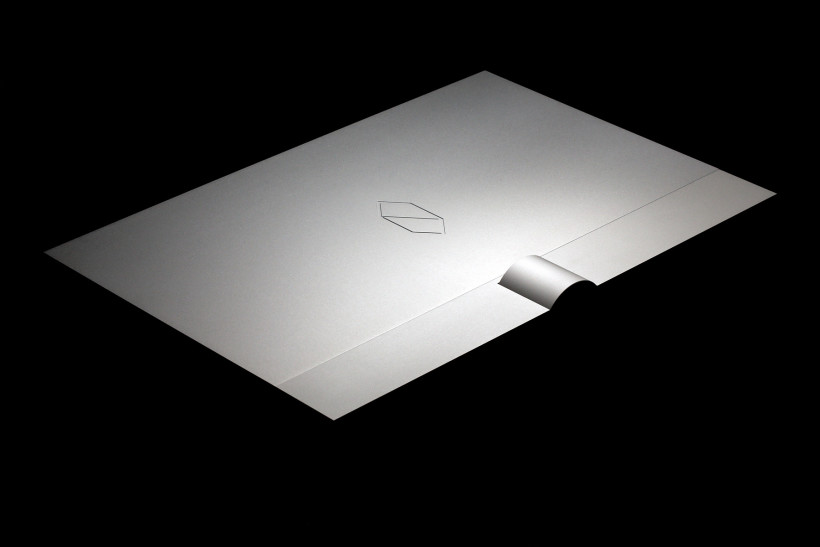 Reimyo DAP-999EX performed in its natural habitat as the first one. The sound was exquisite, I expected nothing less, there were no surprises. Neither excessive punchness nor greatly elevated detailing happened. There was no room for any kind of showiness or trickery, at least I couldn’t hear one. Full Reimyo set combined with Austrian Pharaoh model performed in an exceptionally musical, saturated, organic and smooth way, everything was in the right place and in the right amount. That led to effortlessness and joy in the process. Even if I might have had a small thought in the very beginning that music is a bit darker than usual, after several minutes of adjustment said notion was gone completely. After a while with Lou Reed it was high time to exchange DAC-s and D1’s input was easily heard. DAP-999EX put more emphasis on midband’s saturation, was punchier in the lowest octaves and overall more vigorous one. It also showed a bit more of organic, lifelike texturing in comparison to its opponent. That alone and more politeness in D1’s sound placed this source behind DAP-999EX. Even though both products had rather similar colouring. Things got different once D1’s buffer was turned on as sound got livelier, wider, cleaner and better. Was it able to dethrone Reimyo’s source? No, but its performance elevated audibly and quality gap shrinkage between compared devices was the outcome. Then the time has come to see what D1 is capable of solely as a preamplifier, hence Reimyo’s CAT-777 had to make some room. After several changes of this sort, logical conclusion appeared rather quickly. There was no denying that Reimyo’s flock likes its complementary preamplifier more. More contour oriented, direct and somewhat less grainy D1 had also less present midrange, whereas CAT-777 got those right and added some smoothness on top. It could be heard that it simply fits Reimyo’s family better. Were those differences of day vs night big? No. Audible? Yes, clearly. With head full of valuable impressions I left Jacek and headed towards my 30 sq. meters cellar. LampizatOr Level7 was already there.
Reimyo DAP-999EX performed in its natural habitat as the first one. The sound was exquisite, I expected nothing less, there were no surprises. Neither excessive punchness nor greatly elevated detailing happened. There was no room for any kind of showiness or trickery, at least I couldn’t hear one. Full Reimyo set combined with Austrian Pharaoh model performed in an exceptionally musical, saturated, organic and smooth way, everything was in the right place and in the right amount. That led to effortlessness and joy in the process. Even if I might have had a small thought in the very beginning that music is a bit darker than usual, after several minutes of adjustment said notion was gone completely. After a while with Lou Reed it was high time to exchange DAC-s and D1’s input was easily heard. DAP-999EX put more emphasis on midband’s saturation, was punchier in the lowest octaves and overall more vigorous one. It also showed a bit more of organic, lifelike texturing in comparison to its opponent. That alone and more politeness in D1’s sound placed this source behind DAP-999EX. Even though both products had rather similar colouring. Things got different once D1’s buffer was turned on as sound got livelier, wider, cleaner and better. Was it able to dethrone Reimyo’s source? No, but its performance elevated audibly and quality gap shrinkage between compared devices was the outcome. Then the time has come to see what D1 is capable of solely as a preamplifier, hence Reimyo’s CAT-777 had to make some room. After several changes of this sort, logical conclusion appeared rather quickly. There was no denying that Reimyo’s flock likes its complementary preamplifier more. More contour oriented, direct and somewhat less grainy D1 had also less present midrange, whereas CAT-777 got those right and added some smoothness on top. It could be heard that it simply fits Reimyo’s family better. Were those differences of day vs night big? No. Audible? Yes, clearly. With head full of valuable impressions I left Jacek and headed towards my 30 sq. meters cellar. LampizatOr Level7 was already there.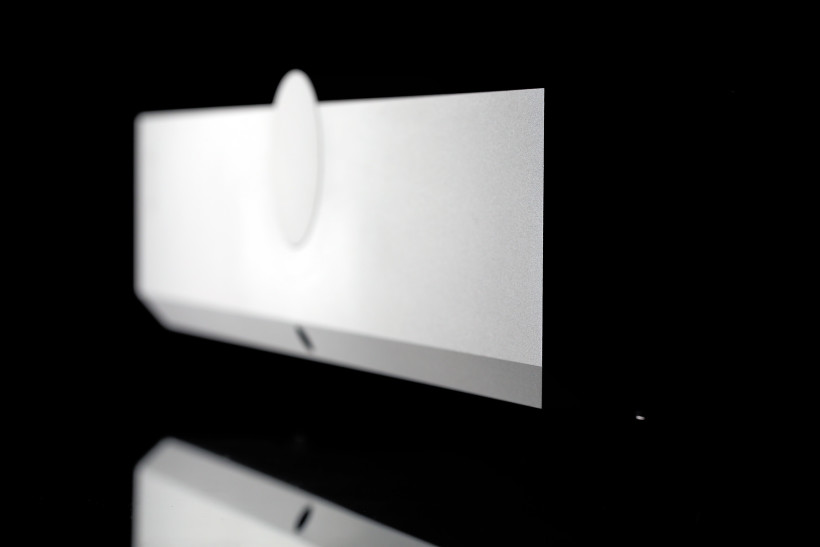 All three sources used in this publication are from similar price range. But to paint proper picture, several words about Polish two-piece d/a converter are in order. Level7 sounds simply outstanding, to a degree that yours truly admits that this is one of the best sources he had a pleasure to listen to. Certain DHT tubes do make a significant difference and it takes some time to figure this puzzle out. But once said matter is resolved, fun part begins. What Level7 does in a marvelous fashion is enormously wide, deep and airy soundstage whereas superb layering makes things additionally spectacular. Unpleasantly constrictive feeling simply isn’t a part of music regardless of components used with it. At least I wasn’t able to build a setup which would give such an outcome. Moving on, overly thin sound is often a successor to said airness and spaciousness. Not in a case of dense, yet not overly thick Level7. It has meat on them bones, saturation combined with smoothness is always top notch with decent recordings whereas details retrieval is very good as well. All things considered, with right tubes this d/a converter has it all and when equipped with WE101D-L, even marvelous punchness is a part of the whole. The same story goes with inherent transparency. What’s there not to like? To be completely honest, there’s one thing I believe all LampizatOr DAC-s tend to do, namely to bring the very first row a bit closer to listener than usual. This feature neatly builds an impression of being closer to musicians than usual. But because of great distance differentiation everything is in order, showiness and exaggeration aren’t there. Needless to say, all things above make Level7 a truly dangerous opponent.
All three sources used in this publication are from similar price range. But to paint proper picture, several words about Polish two-piece d/a converter are in order. Level7 sounds simply outstanding, to a degree that yours truly admits that this is one of the best sources he had a pleasure to listen to. Certain DHT tubes do make a significant difference and it takes some time to figure this puzzle out. But once said matter is resolved, fun part begins. What Level7 does in a marvelous fashion is enormously wide, deep and airy soundstage whereas superb layering makes things additionally spectacular. Unpleasantly constrictive feeling simply isn’t a part of music regardless of components used with it. At least I wasn’t able to build a setup which would give such an outcome. Moving on, overly thin sound is often a successor to said airness and spaciousness. Not in a case of dense, yet not overly thick Level7. It has meat on them bones, saturation combined with smoothness is always top notch with decent recordings whereas details retrieval is very good as well. All things considered, with right tubes this d/a converter has it all and when equipped with WE101D-L, even marvelous punchness is a part of the whole. The same story goes with inherent transparency. What’s there not to like? To be completely honest, there’s one thing I believe all LampizatOr DAC-s tend to do, namely to bring the very first row a bit closer to listener than usual. This feature neatly builds an impression of being closer to musicians than usual. But because of great distance differentiation everything is in order, showiness and exaggeration aren’t there. Needless to say, all things above make Level7 a truly dangerous opponent.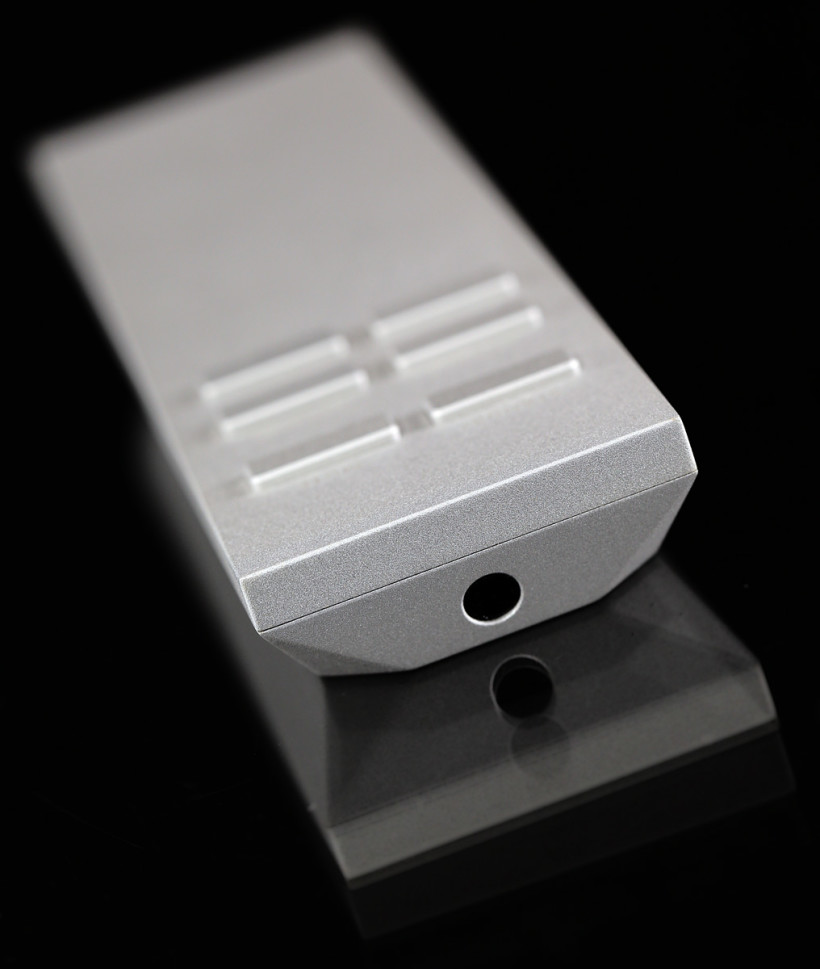 COS Engineering D1 sounds quite differently in comparison do Level7. Both have very little in common actually. Taiwanese c/a converter’s soundstage is stingier on the sides, yet as equally grown in terms of its depth and layering but less airy too. It’s safe to say that D1’s sound is more polite, calmer and condensed. In normal circumstances I’d say that it’s properly dynamic, yet Level7 has even more momentum. Though Polish champ is stunning in that regard and it can be heard instantly. D1’s tonal balance is placed a bit lower which translates to more meat in bass region. The same story goes with thicker and similarly clear midrange. It exposes smoothness and neutrality rather than slightest nuances and clarity. All those factors make D1 quite intimate, rather thick, a bit dark and round sounding source. Switching to this product after a while spent with Level7 doesn’t hurt at all. Quite the contrary, once short accommodation phase is past listener it turns out that this Taiwanese device performs in a very natural, gentle and exceptionally clean way. D1’s sound is deeply coherent and harmonic too. I had this notion that even slightest change in this Taiwanese mixture could impact it in a rather undesirable way and said calmness would be disturbed in the process. All things considered, D1 brings out emotions in music in a vastly different way than Level7. Hence this comparison was more apples vs oranges alike than anything else.
COS Engineering D1 sounds quite differently in comparison do Level7. Both have very little in common actually. Taiwanese c/a converter’s soundstage is stingier on the sides, yet as equally grown in terms of its depth and layering but less airy too. It’s safe to say that D1’s sound is more polite, calmer and condensed. In normal circumstances I’d say that it’s properly dynamic, yet Level7 has even more momentum. Though Polish champ is stunning in that regard and it can be heard instantly. D1’s tonal balance is placed a bit lower which translates to more meat in bass region. The same story goes with thicker and similarly clear midrange. It exposes smoothness and neutrality rather than slightest nuances and clarity. All those factors make D1 quite intimate, rather thick, a bit dark and round sounding source. Switching to this product after a while spent with Level7 doesn’t hurt at all. Quite the contrary, once short accommodation phase is past listener it turns out that this Taiwanese device performs in a very natural, gentle and exceptionally clean way. D1’s sound is deeply coherent and harmonic too. I had this notion that even slightest change in this Taiwanese mixture could impact it in a rather undesirable way and said calmness would be disturbed in the process. All things considered, D1 brings out emotions in music in a vastly different way than Level7. Hence this comparison was more apples vs oranges alike than anything else.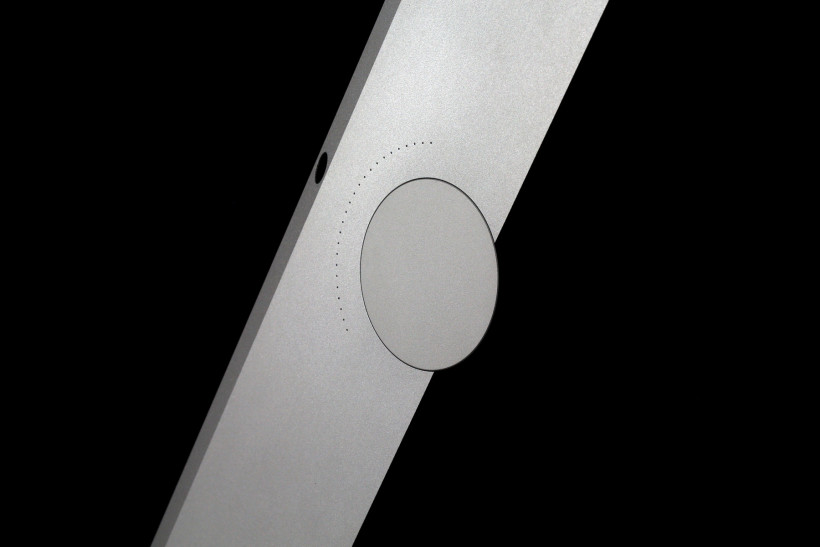 Yet certain D1’s features make it a really high-end device to have. Space it creates is marvelously put together, instruments have proper shapes and there’s a more than safe amount of air between them. On top of that, D1 performs in a smooth and saturated way yet without excessive roundness in the presentation. This device offers fluency and coherence on a level very rarely heard. Extremely black background and instruments separation are both cherries on top and former is among the strongest D1 attributes. My own experiences tell me that this kind of sound is unachievable by sources four times cheaper. It’s not about FR bumps and holes anymore, pricier DAC-s tend to get texturing, smoothness and coherence in an audibly better fashion and D1 is one of them to my ears.
Yet certain D1’s features make it a really high-end device to have. Space it creates is marvelously put together, instruments have proper shapes and there’s a more than safe amount of air between them. On top of that, D1 performs in a smooth and saturated way yet without excessive roundness in the presentation. This device offers fluency and coherence on a level very rarely heard. Extremely black background and instruments separation are both cherries on top and former is among the strongest D1 attributes. My own experiences tell me that this kind of sound is unachievable by sources four times cheaper. It’s not about FR bumps and holes anymore, pricier DAC-s tend to get texturing, smoothness and coherence in an audibly better fashion and D1 is one of them to my ears.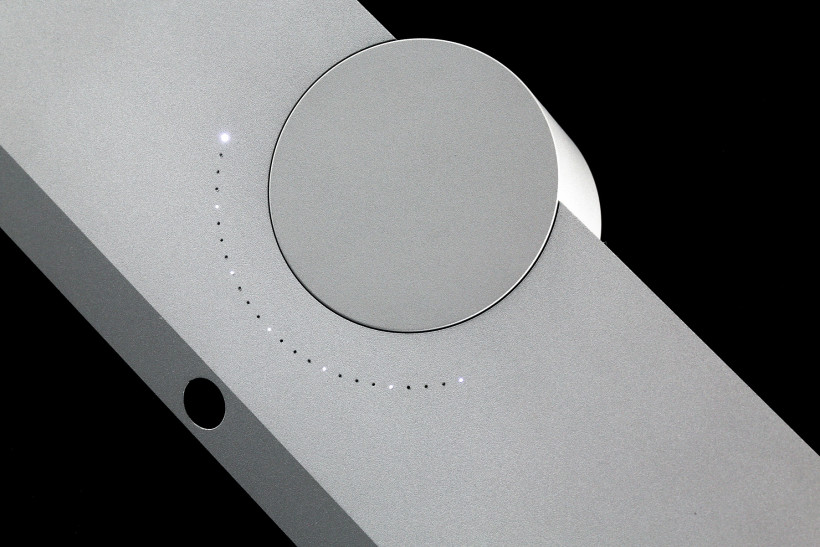 After all experiments above one thing was left to do, namely to find out what D1 can do solely in a preamplifier role. Yet this time in surroundings of more fair nature than Reimyo setup. At first D1 was connected to NuForce REF 9 V3SE monos and replaced with Questyle CMA800R. After several switches of this sort things revealed themselves. Reimyo CAT-777 turned out to be a better one, true. But D1 in comparison to Questyle’s amp within my own four walls is a different, much better. Pricier product brings more mellowness to the table, deeper saturation and smoothness follows. Also sound becomes more resolving due to greater details retrieval. After this experiment it’s hard to deny that volume regulation hasn’t been added to D1 merely to net additional functionality, differences were too big to think so. Yet to find out more about said aspect I had to dig deeper. Hegel H160 was next in line. Bent Holter – Hegel’s CEO and main engineer – says that the most extensive improvements from one Norvegian integrated to another are happening in pre-amplification stage. That was the story with H70, H80 and H160 as well. Hegel’s medium tier integrated can be fixed solely as a stereo power amplifier which I exploited. In such circumstances D1 handled both source and pre-amplification duties in the first place. Then its volume control was bypassed and H160 took over. Long story short, D1’s volume module outperformed Scandinavian one. The sound gained saturation, vividness, resolution and density whereas punchness, soundstaging complexity and airness remained the very same. The conclusion? It’s hard to picture anything different than a clear win-win situation. Said differences weren’t small, quite the contrary. Similar things were equally easily heard both on KEF’s LS50 and Boenicke Audio W5, therefore I don’t see this as a coincidence. It was high time to see how D1 fares against LampizatOr’s TAIV-03 volume module. Here things got a bit different. Former source did the very same things as in previous scenarios, sound became calmer and denser yet without any unwanted changes along the road. Level7 handled sound in a more punchier and airier fashion. Which one was better? That’s beside the point as apples an oranges were on the table once more.
After all experiments above one thing was left to do, namely to find out what D1 can do solely in a preamplifier role. Yet this time in surroundings of more fair nature than Reimyo setup. At first D1 was connected to NuForce REF 9 V3SE monos and replaced with Questyle CMA800R. After several switches of this sort things revealed themselves. Reimyo CAT-777 turned out to be a better one, true. But D1 in comparison to Questyle’s amp within my own four walls is a different, much better. Pricier product brings more mellowness to the table, deeper saturation and smoothness follows. Also sound becomes more resolving due to greater details retrieval. After this experiment it’s hard to deny that volume regulation hasn’t been added to D1 merely to net additional functionality, differences were too big to think so. Yet to find out more about said aspect I had to dig deeper. Hegel H160 was next in line. Bent Holter – Hegel’s CEO and main engineer – says that the most extensive improvements from one Norvegian integrated to another are happening in pre-amplification stage. That was the story with H70, H80 and H160 as well. Hegel’s medium tier integrated can be fixed solely as a stereo power amplifier which I exploited. In such circumstances D1 handled both source and pre-amplification duties in the first place. Then its volume control was bypassed and H160 took over. Long story short, D1’s volume module outperformed Scandinavian one. The sound gained saturation, vividness, resolution and density whereas punchness, soundstaging complexity and airness remained the very same. The conclusion? It’s hard to picture anything different than a clear win-win situation. Said differences weren’t small, quite the contrary. Similar things were equally easily heard both on KEF’s LS50 and Boenicke Audio W5, therefore I don’t see this as a coincidence. It was high time to see how D1 fares against LampizatOr’s TAIV-03 volume module. Here things got a bit different. Former source did the very same things as in previous scenarios, sound became calmer and denser yet without any unwanted changes along the road. Level7 handled sound in a more punchier and airier fashion. Which one was better? That’s beside the point as apples an oranges were on the table once more.
Summary
Before its arrival, I had a certain image of what COS Engineering D1 could offer. The assumption was that it should have aspects of high quality reserved for the best sources known to me and unavailable to much more affordable competitors; organics, saturation, smoothness and detailing. And that exactly was given. The D1 marks its presence in a very clear way soundwise. It doesn’t merely add a bit here and a bit there like many d/a converters do, but often shows things upside down instead. To put it more bluntly, it sounds like a huge pile of money and ears familiar with many different devices of such sort will hear and appreciate it. After several weeks in D1’s company enjoyment curve increased significantly. This kind of involving and stirring sound, yet so clean, calm and mature turned out to be plainly addictive.
Having about $9’000 to spend on a source, listener can pick and choose to his heart’s content, yet no such thing as a perfect device exists. To put it in a good context, LampizatOr’s Level7 sounds phenomenal, yet its looks might discourage many people, which is somewhat understandable. This product needs at least an hour to reveal its full potential and world class tubes are a must. There’s no way around it if one wants to squeeze everything out of this Polish champ. The very first thing after arrival to work was me heading downstairs and firing it up. This scenario quickly became a healthy habit. Japanese DAP-999EX gets to the destination place instantly. Yet redbooks are its bread and the rest of Kazuo Kiuchi’s flock serves as a butter as costly as a nice flat. This is a full Reimyo stack owner’s opinion and after experience in his place I can only agree.
COS Engineering D1 turned out to be the most versatile product out of three. Sound wise it shared more similarities with DAP-999EX than with LampizatOr’s Level7. But truth be told, on a quality level this high, each source has so many things to offer that stating that a particular one leaves others in the dust would be unwise and untrue. Here individual preferences and needs serve as a deciding factors, currently possessed setup is also important obviously. Therefore if one has nearly complete Reimyo rig yet without a source, DAP-999EX is a great choice to make for sure. If DSD is the most used format, I’d strongly advise to pick one of LampizatOr’s flock, grab a set of decent DHT tubes and never look back. But if neutral, grainless and not showy yet mature sounding d/a converter is needed, which also happens to be a great preamplifier, COS Engineering D1 is the one. Yes, its price is steep. But after taking into consideration that not one but two very good devices of equal importance sit in one case, savings appear on the horizon. Let me stress this again: D1 is a source and a preamplifier combo and since in both those functions its strength is, treating one more seriously than the other is a mistake to make. I can easily see COS Engineering D1 under my roof as it handles sound in a different fashion than my current reference yet great nonetheless. ‘Till next time.
Associated equipment:
- Loudspeakers: KEF LS50, Boenicke Audio W5
- Amplifiers: Hegel H60, NuForce REF 9 V3SE
- Source/preamplification: LampizatOr Level7 Psvane WE101D-L, Xonar Essence III, jRiver fed HP Spectre laptop
- Power: GigaWatt PF-2 with LC-2 MK2 power cord
- Cables: Forza AudioWorks Noir series Twin USB cable and RCA interconnects supplemented by Noir concept power cords and speaker wires
- Audio furniture: Rogoz 3QB3, Lavardin K-Rak
Reviewed product’s price in EU: €9’000


